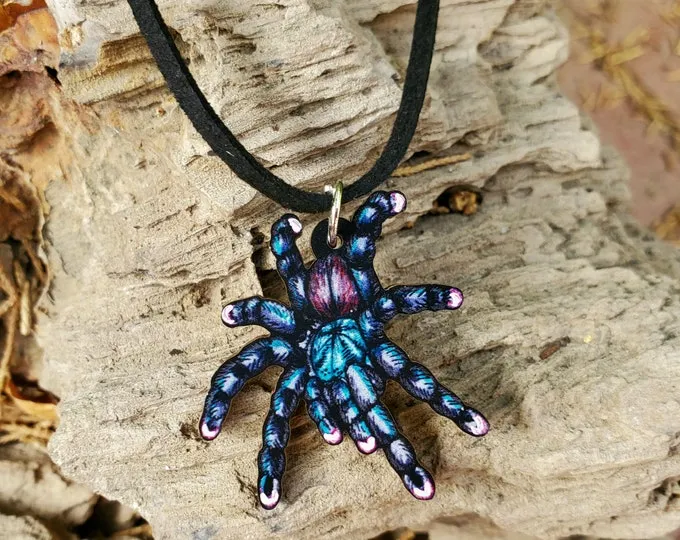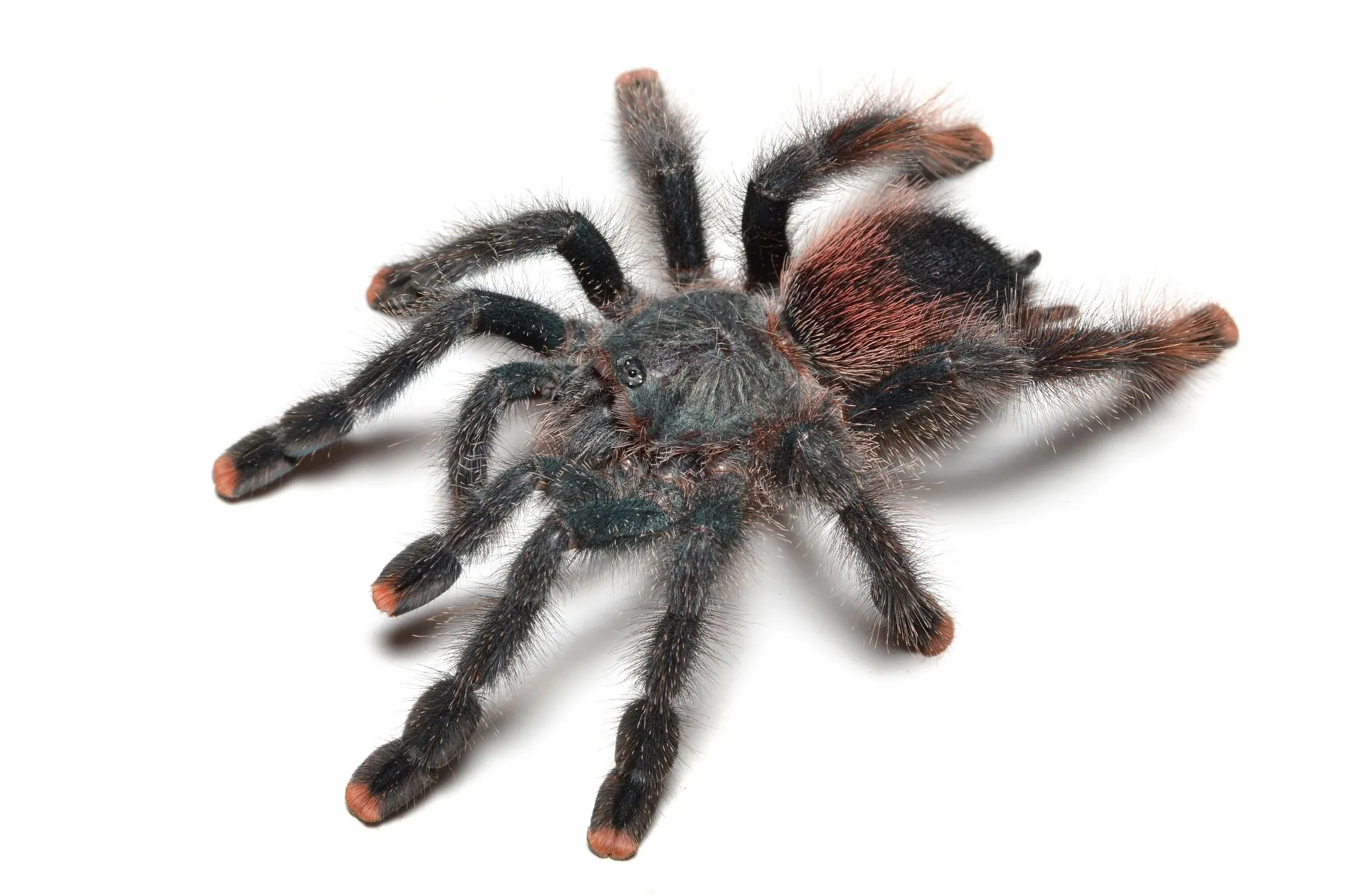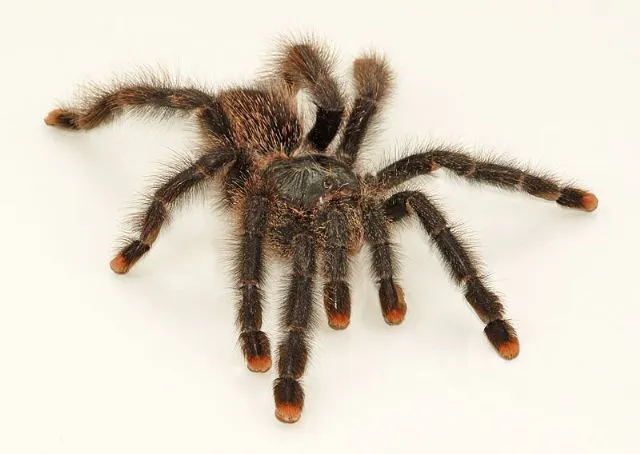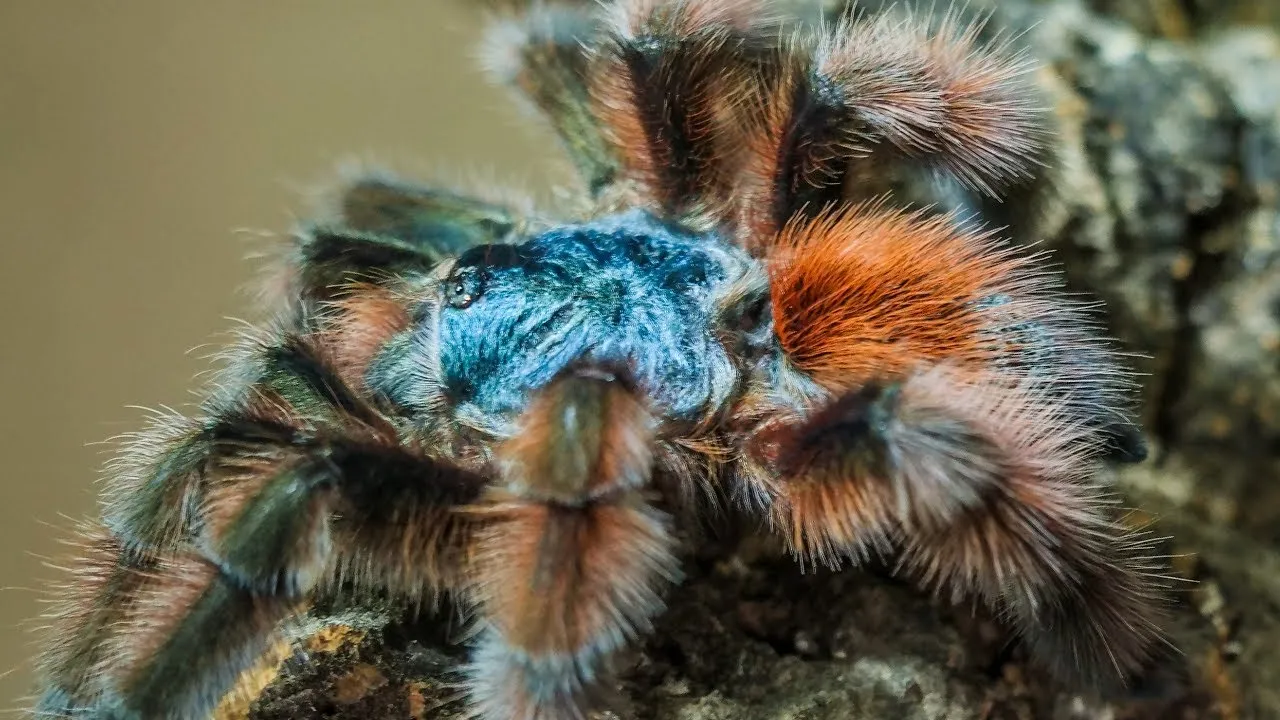What is the Average Size of a Metallic Pink Toe Tarantula (PT)
The Metallic Pink Toe Tarantula (Avicularia avicularia), often abbreviated as PT, is a captivating species known for its vibrant colors and arboreal lifestyle. When considering keeping this tarantula, understanding its size is crucial for providing appropriate care and ensuring its well-being. On average, an adult PT can reach a leg span of approximately 5 to 6 inches. This measurement represents the distance from the tip of one leg, across the body, to the tip of the opposite leg. It’s important to note that this size is a general estimate, and individual tarantulas may vary slightly depending on factors such as genetics, diet, and environmental conditions. Adult females tend to be slightly larger than males, making them the more impressive specimens.
Size Variation Factors
Several factors contribute to the size variation observed among Metallic Pink Toe Tarantulas. Genetics play a significant role, as some tarantulas may simply inherit a predisposition for larger or smaller size. The quality and consistency of the tarantula’s diet are also critical. A well-nourished tarantula, fed a balanced diet of appropriate insects, is more likely to reach its full size potential. Environmental conditions, such as temperature and humidity, can also influence growth rates. Optimal conditions promote healthy molting and overall development, while suboptimal conditions can hinder growth. The availability of space within the enclosure is another important factor. A tarantula that is housed in a cramped environment may not grow as large as one with ample space to move and establish a territory. Overall, a combination of these factors determines the final size of the PT.
Age and Growth

Metallic Pink Toe Tarantulas, like all tarantulas, grow by molting, a process where they shed their exoskeleton to accommodate growth. The frequency of molting decreases as they age. Spiderlings and juveniles molt several times a year, while adults molt less frequently, typically once a year or even less often. The size of a PT increases with each molt. It’s during these molting periods that the tarantula becomes vulnerable, so it is essential to maintain a stable environment. The growth rate is most rapid during the spiderling and juvenile stages. Reaching full size can take several years, depending on the individual tarantula and the factors mentioned above. During the molting process, it is important to avoid disturbing the tarantula. After molting, the exoskeleton is initially soft. The tarantula will need time to harden before it can safely resume its normal activities.
Sex and Size Differences
Distinguishing between male and female Metallic Pink Toe Tarantulas can be challenging. But, it is an important factor in understanding their size differences. Adult females tend to be slightly larger and more robust than males. They also typically have a longer lifespan. Males mature faster and generally have a shorter lifespan. One of the most reliable ways to sex a tarantula is to examine its molt. A male PT will have a modified pair of pedipalps, which appear as boxing gloves, used for mating. Females will not have this feature. When examining the molt, also check for the presence of a spermatheca, which is a sperm storage organ found only in female tarantulas. These differences in size and lifespan, are often related to the different roles they play in the species’ lifecycle, contributing to the overall dynamics of the tarantula population.
Diet and Nutrition
A balanced diet is crucial for a Metallic Pink Toe Tarantula to reach its full size potential. These tarantulas are primarily insectivores, and their diet should consist of appropriately sized insects, such as crickets, roaches, and mealworms. The size of the prey should be proportionate to the tarantula’s size, typically no larger than the tarantula’s body length. Feeding frequency depends on the tarantula’s age and metabolism. Spiderlings and juveniles require more frequent feeding, usually every few days, while adults can be fed once or twice a week. It’s important to offer a variety of insects to ensure a balanced intake of nutrients. In addition to insects, PTs also need access to fresh water. Provide this via a shallow water dish, ensuring it’s always clean and readily available.
Environmental Conditions

Maintaining the correct environmental conditions is essential for the healthy growth and development of a Metallic Pink Toe Tarantula. Temperature and humidity play a significant role in their well-being. The ideal temperature range is generally between 75 to 85 degrees Fahrenheit (24 to 29 degrees Celsius). The humidity level should be maintained at around 70-80%. Use a hygrometer to monitor the humidity levels within the enclosure. Proper ventilation is also important to prevent mold and maintain air quality. A well-ventilated enclosure allows for air circulation, which is vital to the health of the tarantula. Avoid placing the enclosure in direct sunlight or near heat sources, as this can lead to overheating and dehydration.
Housing Requirements for a PT
Providing a suitable habitat is crucial for the well-being of your Metallic Pink Toe Tarantula. PTs are arboreal, meaning they live in trees, so their enclosure should be taller than it is wide. The enclosure should be made of a material that is easy to clean and maintain, such as glass or acrylic. The enclosure should be well-ventilated, with holes or mesh to allow for air circulation, which is very important for their health. Provide a substrate layer at the bottom of the enclosure, which can include coconut fiber or a mixture of peat moss and vermiculite. This substrate helps to maintain humidity and provides a natural environment for the tarantula. Offer climbing structures, such as branches and cork bark. Ensure that the tarantula has access to a shallow water dish. This helps to maintain hydration and provides a place to drink.
Choosing the Right Enclosure Size
Selecting the appropriate enclosure size is crucial for the comfort and well-being of your Metallic Pink Toe Tarantula. The enclosure should be large enough to allow the tarantula to move around freely, but not so large that it feels exposed and insecure. A general guideline is to provide an enclosure that is at least three times the tarantula’s leg span in width and height. As a general rule, for a juvenile, a terrarium of 8x8x12 inches is usually sufficient. For an adult, a terrarium of 12x12x18 inches or larger is recommended. Avoid overcrowded enclosures, as this can stress the tarantula and hinder its growth. Keep in mind that the enclosure size may need to be adjusted as the tarantula grows and molts.
How to Measure Your PT

Accurately measuring your Metallic Pink Toe Tarantula is essential for monitoring its growth and ensuring that it is healthy. The most common measurement is the leg span, which is the distance from the tip of one leg to the tip of the opposite leg, when the tarantula is stretched out. This measurement provides an overall indication of the tarantula’s size. To measure your tarantula, gently encourage it to sit on a flat surface, such as a piece of paper or cardboard. Carefully extend its legs and use a ruler or measuring tape to measure the leg span. Record the measurement and the date to track its growth over time. It is also useful to note the size of the tarantula’s body, measuring the length and width of the cephalothorax (the combined head and chest). This measurement can also be helpful in tracking the tarantula’s progress, as well as for comparison.
Tools for Measurement
Several tools can be used to measure your Metallic Pink Toe Tarantula effectively. A flexible measuring tape is a convenient option for measuring the leg span, as it can easily conform to the tarantula’s shape. A ruler can also be used, although it may be slightly more challenging to measure the full leg span if the tarantula is not fully extended. A digital caliper offers precise measurements and is useful for measuring the size of the tarantula’s body. When using any measuring tool, be gentle and avoid causing stress to the tarantula. Have a soft brush or small object to gently encourage the tarantula to extend its legs. Record the measurements accurately, and keep a log of your tarantula’s growth progress.
Why Size Matters for PT Owners
Understanding the size of your Metallic Pink Toe Tarantula is crucial for several reasons. The size determines the appropriate enclosure size, ensuring that the tarantula has enough space to thrive. The size is directly linked to the tarantula’s nutritional needs. Proper feeding is essential for optimal growth and overall health. Monitoring the size helps owners to assess the tarantula’s health, as any significant deviations from the expected growth pattern can indicate an underlying issue. This knowledge enables owners to provide a suitable habitat, proper nutrition, and appropriate care, contributing to the tarantula’s well-being. This also contributes to a more enriching experience for the owner, as you develop a deeper understanding of the animal.
Health and Well-being

The size of your Metallic Pink Toe Tarantula is closely linked to its overall health and well-being. A healthy tarantula will grow at a steady and consistent rate, molting regularly. Any significant changes in growth rate or size can be a sign of underlying problems. Poor diet, improper environmental conditions, or the presence of disease can all affect the tarantula’s size. Signs of a problem might include a lack of appetite, lethargy, or difficulties molting. If you notice any unusual behavior or changes in size, it’s important to consult with an experienced tarantula keeper. Providing the proper size enclosure, offering a balanced diet, and maintaining optimal environmental conditions, will all contribute to a healthy tarantula.
Breeding Considerations
When considering breeding Metallic Pink Toe Tarantulas, size plays an important role. The female tarantula should be fully mature before breeding, which is indicated by her size and the completion of her final molt. Adult females are generally considered mature at a leg span of approximately 5 to 6 inches. The male tarantula must also be mature, identified by the presence of a mating claspers (pedipalps). The breeding process involves introducing the male to the female’s enclosure and observing their behavior. If the female is receptive, the male will attempt to mate with her. Following successful mating, the female will lay an egg sac, which will contain hundreds of spiderlings. The size of the female will influence the number of eggs laid. Understanding the growth stages and size of the PT is therefore important for the successful breeding and rearing of young tarantulas, ensuring their healthy development.
